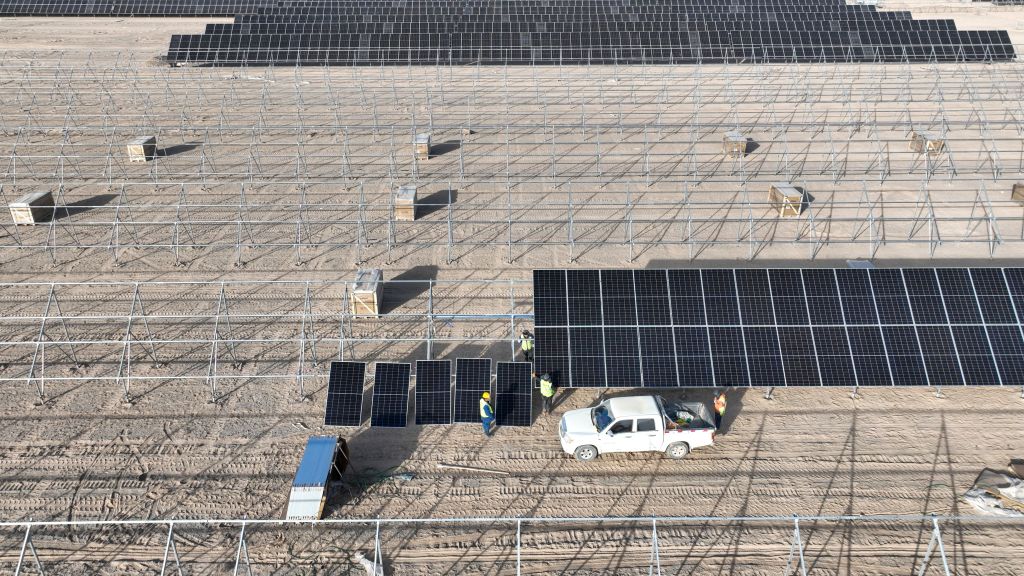
For decades, finance has been the (often unspoken) lynchpin of climate action. In the U.S., for example, innovative tax mechanisms helped finance wind and solar power, turning them into the powerhouses they are today. In global climate talks, the promise of funds for emerging economies has helped advance climate negotiations in thorny moments.
Next year, expect finance to take center stage in climate conversations. Even if central banks stop raising interest rates or even lower them, the cost of raising capital will remain high, making finance a key challenge for project developers to overcome. Meanwhile, emerging global economies will continue to demand that funds flow to finance their transition—industry watchers expect that negotiators at next year’s U.N. climate summit in Baku will hash out a new collective goal for finance to flow to the Global South.
Financing new technologies—especially in emerging economies—can prove difficult even in less-complicated economic times. But recent developments in the world of global finance also present an opportunity for firms willing to think creatively.
The core reason that finance is so important to clean-energy deployment is the primacy of up-front costs for infrastructure in the industry. Those construction costs usually need to be financed. Fossil-fuel projects also have upfront costs, of course, but they tend to be lower, as the cost of producing energy from fossil fuels is largely attached to purchasing gas, oil, or coal when it’s needed—which typically does not rely on financing.
A few factors are now bringing these realities to a head. First, higher interest rates have shaken up the numbers for projects that penciled out well even just a year ago. And, second, emerging economies have come under increased pressure to stem emissions—but can’t actually afford the cost of borrowing that would enable them to do so.
Indeed, at COP28 in Dubai, developing countries argued that they could not pledge to bigger decarbonization without adequate finance. At COP30 in 2025, all countries are supposed to come with new national commitments to cut emissions. COP29, held next year in Baku, will test whether the money is there to give countries the confidence to commit. “The bridge is finance,” says Cassie Flynn, the Global Director of Climate Change at the United Nations Development Program.
What sort of numbers might get tossed around in Baku? The most recent financial commitment, made at COP15 in Copenhagen in 2009, called on wealthy countries to send $100 billion in annual climate finance to the Global South beginning in 2020. Whether that promise was eventually met depends on who you ask—but no one thinks $100 billion will be adequate going forward.
Much of finance conversations to come in 2024 will likely center on funds from governments of wealthy countries like the U.S. and institutions like the World Bank, but the real goal will be mobilizing private capital using a blended finance structure. In short, that approach combines capital from the private sector with concessional money—from, say, governments or philanthropy—that accepts lower returns or takes the first loss on a project that goes belly up.
Firms that get these structures right will position themselves as leaders in a market poised to grow rapidly. BlackRock, for example, launched a fund in 2021 that combined money from governments and philanthropies along with capital from institutional investors to demonstrate how such a project can be structured successfully. The firm says that the fund received “huge interest” both from investors looking to earn a market-rate return and impact investors looking to take on additional risk to catalyze the market. Now governments and private institutions alike just need to create the product offerings to match.
More Must-Reads From TIME
- The 100 Most Influential People of 2024
- Coco Gauff Is Playing for Herself Now
- Scenes From Pro-Palestinian Encampments Across U.S. Universities
- 6 Compliments That Land Every Time
- If You're Dating Right Now , You're Brave: Column
- The AI That Could Heal a Divided Internet
- Fallout Is a Brilliant Model for the Future of Video Game Adaptations
- Want Weekly Recs on What to Watch, Read, and More? Sign Up for Worth Your Time
Write to Justin Worland at justin.worland@time.com